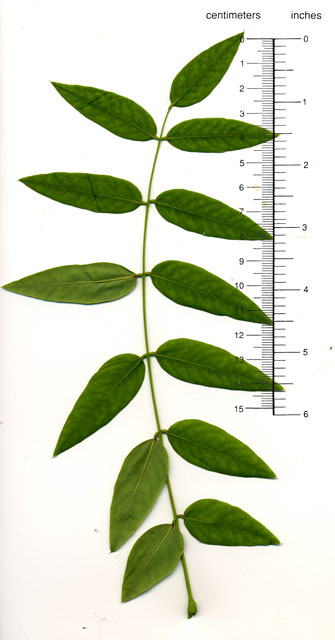Styphnolobium japonicum
 pagoda tree
pagoda tree
Deciduous tree of generally pleasing appearance with long clusters of pale yellow flowers in summer. The compound leaves have 11 leaflets, more or less, each 1 to 2 inches long and having a tiny sharp point. Kidney-shaped beans are contained in meaty spherical envelopes, each with the characteristic umbilical scar familiar in beans. These spheres are much more widely spaced than beads on a string, so at first sight the pod looks nothing like a pod.
Four specimens, about 25 feet tall, flank the Cowell Houses entry gate off the parking lot on Bowdoin Street near Campus Drive East. Several trees are on San Francisco Court, and six on Galvez Mall in the dividing strip between Sweet Hall and Stern Hall.
The pagoda tree is one of the five trees established by the Chou dynasty of the 1st millennium bc as memorials for the departed (see also Koelreuteria).
Illustrations: leaflet | leaf and fruit (From An Illustrated Manual of Pacific Coast Trees, Howard E. McMinn & Evelyn Maino).
About this Entry: The main text of this entry is from the book Trees of Stanford and Environs, by Ronald Bracewell, published 2005. Name updated to Styphnolobium japonicum (Feb 2024, SP).




